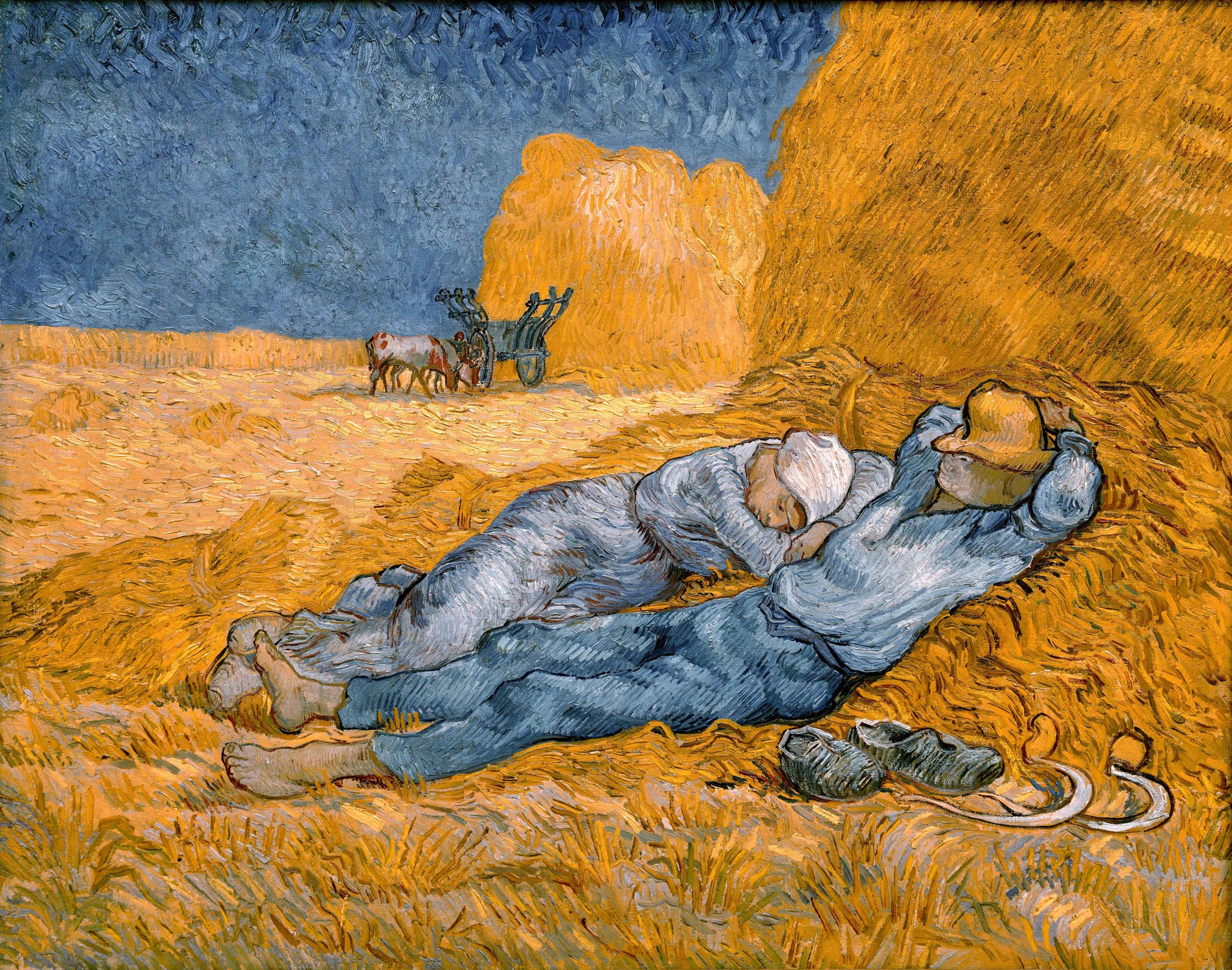
Getting my first glimpse of the 61th New York Film Festival’s lineup a few weeks back, a happy but unaccustomed thought struck: this looks like the best NYFF in many, many years. Granted, I’m always excited when New York’s premiere film event begins its annual autumn run at Lincoln Center, and the lineup for its Main Slate (a very selective 30 or so films) invariably contains a number of can’t-wait-to-see titles. But as I looked over the list for 2023’s festival, it seemed to promise a truly uncommon profusion of noteworthy films.
To a large degree, this surely reflects the strength of the cinematic year so far. As it has been some years since New York presented world premieres, it is now firmly a “best of the fests” event, gathering the most celebrated titles showcased at Cannes and Venice, and to a lesser extent Telluride, Berlin and Sundance. (This year, Toronto was less of a contributor, in part due to Hollywood’s writers and actors strikes.) As the year progressed and I kept reading about acclaimed films emerging from these festivals, the more it seemed New York was positioned to reap the results of a rare bounty.
But why this year? Perhaps the most obvious explanation is that it’s cinema’s slightly belated full recovery from the worldwide downturn caused by the Covid-19 pandemic, when the NYFF and other festivals went “virtual” for one or more editions and film production in many countries was drastically curtailed. Once these restrictions were lifted, it was hardly surprising that the figurative floodgates opened, giving programmers a wealth of choices of new films by prominent directors and resurgent national cinemas.
I have my own theory, which involves a phenomenon that accompanied the pandemic: the upsurge in home viewing via streaming. Back in the ‘50s, home viewing boomed due to another electronic intrusion, television, which imported many cinematic techniques but produced mass entertainment that was widely seen as mostly trashy and inferior. As Marshall McLuhan noted, when a new mass medium comes along, it elevates the status of the previous mass medium: so cinema, previously regarded as trashy, was increasingly seen as slouching toward art: the French crowned Hitchcock and Ford as auteurs, while sophisticated Americans left home to savor the visions of artists like Bergman, Bresson and Fellini.
The surge in streaming entertainment has also imported a lot of cinematic techniques into the video realm while inspiring pundits to bemoan the general level of quality (despite certain striking exceptions, of course) and relative paucity of auteur visions. A phenomenon less noted, though, involves the portion of the audience – a significant one, I think – that has gotten an education in cinema history and possibilities through watching classic and art films on outlets like the Criterion Channel and foreign series on numerous platforms.
It’s my hunch that, much as ‘50s TV sent some viewers in search of richer aesthetic rewards in cinemas, the streaming wave has returned post-pandemic viewers to movie theaters with a taste – a hunger, even – for more artistically creative and challenging fare, especially of the auteur variety. Was this phenomenon not at least partly responsible for the huge box-office success of Christopher Nolan’s dense, complex, three-hour “Oppenheimer” this summer? (I first saw the film in a very large, completely full cinema in Glasgow, Scotland, where the audience seemed entirely rapt throughout. It was an experience I’ll never forget, and that helped sharpen my anticipation of the 2023 NYFF, which runs Sept. 29-Oct. 13.)
It’s also worth wondering if the storytelling capaciousness afforded by streaming has stimulated an inclination toward longer narratives among both audiences and filmmakers. That’s certainly suggested by the greater-than-usual longer running times among the films on display at this year’s NYFF. But if that sounds like I’m complaining, I’m not. Though generally a fan of concision in moviemaking, I found that many of the longer films I saw in the first week of festival press screenings offered enough pleasures and fascinations to justify their lengths. Following is a selection and I’ve noted the running times (not all are long!).

Justine Triet’s “Anatomy of a Fall” (150 minutes), the best film I’ve seen in the festival so far, is a riveting drama that’s also a hugely impressive display of filmmaking skills. Though not all Cannes Palme d’Or winners are estimable films (see the sub-Cronenbergesque “Titane” two years ago), Triet’s work richly deserved the honor this year. Phenomenal German actress Sandra Huller plays a successful novelist who lives in a chateau in the French Alps with her husband, a writer who’s suffering a writer’s block that he blames on her. When he suffers a fatal fall from the house’s top floor, she’s charged with murder, though the possibility of suicide is also evident. The ensuing trial is as brilliantly written and staged as I’ve seen in any courtroom drama in ages. One fascination is the part that language plays: the wife is German, the husband French, so they compromise on English to speak at home (their young son, who plays a crucial part in the trial, gets a mix of all three). In court, there’s a climactic flashback scene where the wife – going ballistic in English – lets loose an emotional tirade that will send chills up many spines (it did mine); this scene’s force, and painful view of male-female dynamics, has drawn comparisons to Bergman’s “Scenes from a Marriage,” the gold standard for such inquisitions.

Nuri Bilge Ceylan’s “About Dry Grasses” (197 minutes) is the latest from a filmmaker who specializes in films of great length. The Turkish auteur is something of an acquired taste, and I will admit it took me a while to acquire it. But his “Winter Sleep” and “The Wild Pear” won me over entirely, and he now seems a master with few equals in world cinema. His new film begins with the image of a man trudging across a blank white snowscape. The place is a remote village in eastern Anatolia and the man is Samet (Deniz Celiloglu), who’s been obliged to teach art to seventh and eighth graders for too many years. The film’s press notes describe him as “young.” I would say he looks in his late 30s, i.e., on the brink of middle age and the psychological backwash that entails. The story’s first half centers on the trouble he encounters when a flirty teenage girl in one of his classes accuses him improper attentions. The second half mainly concerns his relationship with a brainy, assertive female teacher; it climaxes with an extraordinary long (30 minutes? 40?) scene in which she has him to dinner and they discuss everything from education to terrorism and establish a carnal bond that evidently will lead them nowhere. Ceylan’s films captivate viewers who will go with their slow unfolding and avoidance of standard dramatic forms in search of textures that are often described as novelistic and philosophical. “About Dry Grasses” merits both descriptions. It is a portrait of people trapped on the margins of society who sense that life will offer them nothing better.

Victor Erice’s “Close Your Eyes” (169 minutes) is the first dramatic film the legendary Spanish director has made in 40 years and only the third overall (his first, the widely acclaimed “Spirit of the Beehive (1973), nervily allegorized life in Franco’s Spain while the dictator was still in power). His latest feels like the work of a filmmaker in his prime, one who is simultaneously relishing the pleasure of working in cinema while contemplating the medium’s peculiar spell. His story begins in a storied mansion outside Paris where a wealthy, ailing Spanish expat persuades a younger man to go to Singapore to search for his long-lost daughter. Soon enough this exchange is revealed to be a scene being filmed for a movie. Then we flash forward several decades to the present, where an aging filmmaker begins a quest to find out what happened to one of the earlier movie’s actors, who disappeared some years before. The search eventually leads him to an institution on the coast, where the former actor has been living, devoid of his memory. Can cinema help him recover his past and his identity? Erice’s languorous storytelling, with its quiet sympathy for all of the film’s characters, takes many pleasing detours but ultimately leads to an ending that is abrupt, surprising and utterly transcendent. An elderly man in the film opines at one point that cinema lost its magic “when Dreyer died.” Erice seems out to revive that magic, and his film’s last minutes miraculously do just that.

Ryosuke Hamaguchi’s provocatively titled “Evil Does Not Exist” (102 minutes) taught me a word I’d never heard before: glamping. I don’t know if the term really exists in present-day Japan or if Hamaguchi made it up for his film, but it’s a contraction of “glamorous camping,” a practice whereby wealthy urbanites go to the country for rest and relaxation in a facility that shields them from the outdoors’ unpleasant aspects. In his follow-up to the much longer “Drive My Car,” Hamaguchi takes us to Mizubiki, a village whose 6,000 residents live in harmony with nature, finding wild wasabi in the woods, crafting a delicate udon that depends on the local spring water. Then one day a man and a woman arrive who say they represent Playmode, a Tokyo company that wants to build a glamping facility nearby. Naturally most of the locals think it will ruin their idyllic life and so are opposed. The film’s most memorable scene shows the two sides facing off against each in a town meeting, with extraordinary attention given to the location of a septic tank. There is social satire here, to be sure, but Hamaguchi doesn’t stress it or play favorites (the interlopers are both attractive, interesting characters). The director reportedly began the film in collaboration with composer Eiko Ishibashi, and their work together emphasizes the sensual and the beauty of nature. One big quibble: the film’s last few minutes are bizarre and baffling, an ending that defies ready interpretation. They don’t ruin what’s gone before but will surely leave many viewers in deep head-scratching territory.

Andrew Haigh’s “All of Us Strangers” (105 minutes) comes from the English director whose 2011 drama “Weekend” is described by the festival’s press notes as “among the most widely beloved queer romances of the 21st century.” After the admirable “45 Years” (2015) and “Lean on Pete” (2017), Haigh returns to queer territory here, but makes a remarkable leap from straightforward realism to a narrative approach that might be described as poetic surrealism. Andrew Scott plays a 30ish gay guy whose lonely life in a sterile London high-rise is suddenly interrupted on two fronts: he meets a dishy, somewhat mysterious guy (Paul Mescal) who’s been gazing at him from outside his building, and he encounters and begins visiting the home of a 30ish couple who treat him as their young son, and he responds by treating them as his deceased parents. On paper this premise (based on Taichi Yamada’s novel The Discarnates) might seem nearly impossible to pull off dramatically, but Haigh’s skills make it engrossing, persuasive and ultimately beautiful, a Henry James-like modern ghost story that has some insightful things to say about early trauma, contemporary gay life and the need for love. He’s aided by fine performances by his cast, which also includes Jamie Bell and Claire Foy.

Todd Haynes’ “May December” (113 minutes), the festival’s Opening Night attraction, I regret to say is also its one disappointment so far. Natalie Portman plays a TV star who comes to Savannah to study a housewife (Julianne Moore) who she will play in a movie about a scandal the woman was involved in years before. Haynes is a very talented and distinctive filmmaker, but he didn’t write this film’s screenplay (it’s by Samy Burch and Alex Mechanik), which stitches together various melodramatic cliches in a way that, though it allows Portman and Moore a few nice scenes together, is all too often dull, unconvincing or confusing. But my biggest gripe about the film is its music: rather using than an original score, Haynes pilfers Michel Legrand’s magnificent music for Joseph Losey’s “The Go-Between.” In a previous instance when I complained about a director cribbing great music from other scores for his film, I said that every time I heard the borrowed music, it threw me out of the movie I was watching into memories of the better films it came from. With Haynes’ usage there is the additional problem that Legrand’s elegant, propulsive score seems employed to give “May December” some drama and mystery the story onscreen lacks. That unfortunately only draws attention to the film’s unfocused tone and scattershot drama.




